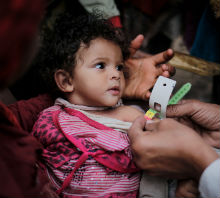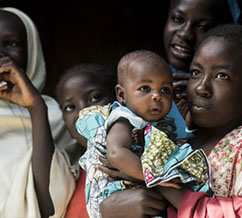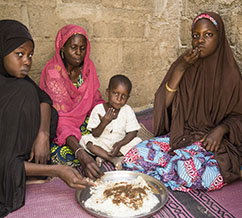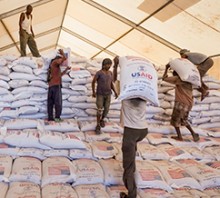Speeches Shim
Global donors continue to be confronted this year with major humanitarian crises around the world, which demand an immediate, substantial, and collaborative response. The USAID-funded Famine Early Warning Systems Network, or FEWS NET, warned early on that 2017 would see an unprecedented 81 million people across 45 countries in need of emergency food assistance, largely due to persistent conflict, severe drought and economic instability. South Sudan experienced famine earlier this year and three other countries—Somalia, Nigeria and Yemen—face the threat of famine, putting a combined 20 million people at risk of severe hunger or starvation. In terms of scale, more than twice the populations of New York City and Washington, D.C. combined are at risk. Over the past year, I have traveled to some of these countries and others facing severe food insecurity to see firsthand the situation on the ground. Today I want to share with you more about the ongoing crises in these countries, what we and others in the international community are doing to respond, and the challenges these countries face.
The Global Food Security Act sent a clear message that the United States is committed to addressing the root causes of poverty and hunger by equipping people with the tools to feed themselves. Feed the Future, guided by the Global Food Security Strategy, is leveraging investment from partner countries and the private sector to reduce reliance on humanitarian aid, promote American prosperity, deliver results, and build stability around the world. What began as the U.S. Government response to the 2008 global food crisis under President George W. Bush, led to a mobilized commitment and investment from other donors and countries in targeted, long-term food security solutions. These efforts continue today in many of the world’s most vulnerable countries, including those faced with the specter of famine and insecurity.
Today we are joined by Mr. Robert Jenkins, Acting [corrected title] Assistant Administrator for the U.S. Agency for International Development's Bureau for Democracy, Conflict, and Humanitarian Assistance. Mr. Jenkins will discuss U.S. humanitarian aid to fight famine in Nigeria, South Sudan, Somalia, and Yemen, and in particular, the recent announcement of an additional 639 million dollars in assistance for this effort. Mr. Jenkins is speaking to us from Washington, D.C. We will begin with remarks from Mr. Jenkins, and then we will open it up to your questions.
Dire food insecurity persists despite UN removal of Famine designation in Unity. Approximately 6 million people projected to be severely food insecure in July. US government (USG) announces $199 million in additional humanitarian assistance for the South Sudan response.
Famine Early Warning System (FEWS) NET expects persistent food security crisis through early 2018. USAID/OFDA staff assess health, nutrition, and water, sanitation, and hygiene (WASH) needs in northern Kenya. US Government (USG) announces nearly $126 million in new humanitarian assistance for Somalia and Somali refugees in the Horn of Africa region.





Comment
Make a general inquiry or suggest an improvement.